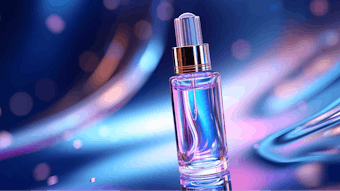
Last year, Cosmetics & Toiletries highlighted1 the growing role of artificial intelligence (AI) in skin care. Fast-forward one year and the landscape has prominently shifted with the introduction of various AI technologies and, more notably, the rise of generative AI. This happened primarily due to the emergence of ChatGPT – a tool that has significantly impacted consumers and the industry, reshaping perceptions of the role of AI and generative AI in both business processes and implementation strategies.
Log in to view the full article
Last year, Cosmetics & Toiletries highlighted1 the growing role of artificial intelligence (AI) in skin care. Fast-forward one year and the landscape has prominently shifted with the introduction of various AI technologies and, more notably, the rise of generative AI. This happened primarily due to the emergence of ChatGPT – a tool that has significantly impacted consumers and the industry, reshaping perceptions of the role of AI and generative AI in both business processes and implementation strategies.
Unlike the discreet AI algorithms behind Netflix, Spotify and Tesla, interacting with ChatGPT has sparked enlightenment, leading many business owners to consider how their organization might benefit from it. A recent Gartner poll2 revealed that 45% of executives credit ChatGPT for their increased AI investment, a testament to its influence and transformative potential. Among the most desired focuses named for AI implementation were customer experience and revenue growth.
While buzzwords like blockchain, NFT (non-fungible token) and metaverse have made waves, none have matched generative AI's seismic impact in 2023. It has shattered previous notions by demonstrating its capacity to handle creative tasks such as media content generation,3 once believed to be the exclusive domain of humans. Even images can be generated from text prompts, e.g., through the AI-driven image generator service Midjourney; you can also ask ChatGPT to help you create a prompt.
Beauty and personal care have not been left behind in this journey. Applications for AI have emerged in everything: from consumer-facing product advice and product trials/sampling to ingredient discovery, market strategy development, product conceptualization, formulation optimization and more for cosmetics R&D. This article gives an overview of these applications, which shows how far the industry has come; it also hints at the vast untapped potential of AI.
AI in Skin Assessment and Product Recommendation
Skin care is a market known for its quick adoption of trends and innovative marketing. When most contemplate the role of AI in beauty, skin care – and more recently, hair4 and perfumery5 – usually comes to mind; particularly consumer-facing technologies such as skin analysis tools in-store and online, virtual try-ons or devices to personalize and deliver cosmetics at home.6
Companies like Proven are harnessing AI to match curated databases of ingredients and their effects with consumer skin profiles. The databases are commonly derived from peer-reviewed research publications and publicly available databases of ingredients like GRAS (generally recognized as safe),7 which is curated by the FDA, or the European Union Monograph of Herbal Substances.8
For skin profiling, data points are collected using AI facial analysis or a simple quiz. Common data points include demographics; environmental data on UV exposure and pollution; skin sensitivities and conditions; and consumer preferences, habits and lifestyle choices. AI is then used to cross-reference this information with data about ingredients, functions, skin conditions, etc., to derive product recommendations and deliver personalized products to the consumer.
Another approach, such as that by Revea, combines data from questionnaires with that collected by smartphones to provide product recommendations. Here, hyperspectral imaging captures dozens of skin characteristics through the user’s phone that are cross-referenced with parameters for healthy skin, using AI to determine the skin’s needs. The company’s advanced AI provides an in-depth visual assessment, capturing aspects like hydration levels, barrier function (e.g., sebum production, TEWL), tone irregularities and UV exposure. Utilizing this intricate data, AI identifies fundamental skin concerns, such as redness and uneven texture, subsequently offering suggestions from over 3,000 tailored skin formulations.
The author’s venture, Haut.AI, takes AI a step further. It combines advanced image analysis and questionnaires with a tool trained on millions of face, skin and hair images, validated by skin experts, to identify 15 core skin health and beauty metrics, eight hair metrics and 150 additional data points, such as L*a*b metrics, skin photodamage, environmental damage and image data credibility scores. The system can work with static images and video selfies to enable a 180-degree scan.
The high-throughput application then generates a Skin Metrics Report to create personalized skin care recommendations. It also uses clinical claims data to visualize skin changes and deliver a simulation of the treatment effects through the company’s SkinGPT technology.9 The tool enables brands, retailers and dermatologists to conduct in-depth skin and hair biomarker analyses from a video selfie.
The fragrance field is also catching the AI wave. O My Note10 uses AI to assist consumers in their fragrance selection process. At the core of the innovation lies OlimpIA, a chatbot that can analyze user inputs in audio, video and text. Its primary mission is to decipher the user's emotional state and individual persona, tailoring recommendations for fragrances and perfumes that align with their preferences.
OlimpIA relies on a database of fragrances commonly found in perfumery and a thorough inventory of available market perfumes. This personalized approach is said to enhance the overall fragrance discovery journey.
AI in Product Simulation
In another application, companies such as Perfect Corp. are using AI to advance digital product trials or “sampling.” The company utilizes AI to tap into deep learning and computer vision algorithms that provide highly accurate facial mapping with three-dimensional augmented reality to create realistic makeover experiences. The technology also detects wrinkles, spots, skin texture and dark circles in real-time and visually projects its users’ potential results with regular product use, e.g., smoothing skin, erasing blemishes, etc.
Cosmetic manufacturer Kosé Corp., of Japan, similarly released a 3D projection makeup simulator: The Color Machine, at its renovated store in Tokyo in August 2022.11 This technology was also presented during the IFSCC 2023 Congress in Barcelona,12 where the speaker described it as “mixed reality” (MR) – and the next step up from AR. The Color Machine uses a high-speed projection mapping technology created by Yoshihiro Watanabe, an associate professor at the Tokyo Institute of Technology, to project images of eye shadow, lipstick, etc., in line with the position of the eyes and mouth that remain in place even if the user changes the direction of their face.13
According to the presentation,12 delay-less projection was achieved by optimizing the facial recognition process and using a high-speed projection device that matched the recognition limit of the human eye. A high-accuracy color reproduction model was also developed based on skin tone clustering and shown to be indistinguishable from actual makeup.
Ada, the AI-based customer service provider, offers human-like chat support that has the potential to automate, speed up and streamline customer interactions for a seamless and personalized experience. Ipsy, for example, based its GlamBot on this technology to service beauty customers.14 In this author’s experience, the chatbot's use of Ipsy's distinctive language helps to make the interaction feel genuinely native.
AI in Beauty R&D
The transformative power of AI in beauty R&D is undeniable. While consumers may only interact with the final product, behind the scenes AI is revolutionizing every step of the product development process. Its significant potential can be demonstrated from conceptualization to regulatory review. Following are just a few examples.
Market research and strategy: ChatGPT stands out as a tool that can assist brands in pinpointing market gaps, scrutinizing competitors and forecasting upcoming trends. For example, brands can feed ChatGPT vast amounts of consumer reviews, feedback and questions related to products. By analyzing this data, ChatGPT can highlight recurring themes or product demands that are currently unmet in the market.
Conceptualization: Platforms like the previously mentioned Midjourney can breathe life into ideas by generative AI. As noted, the technology takes text prompts and performs text-to-image generation to create a rich visualization, providing a conceptual landscape for a potential product or brand atmosphere. For example, Figure 1 shows an image created for this author based on ChatGPT’s suggested text prompt to Midjourney for a state-of-the-art skin care AI research lab.
 Figure 1. Image created based on ChatGPT’s suggested text prompt to Midjourney for a state-of-the-art skin care AI research lab
Figure 1. Image created based on ChatGPT’s suggested text prompt to Midjourney for a state-of-the-art skin care AI research lab
Following is an excerpt from the text prompt: “Picture a state-of-the-art skin care research lab, bathed in soft, ambient lighting. Pristine white countertops stretch out, populated with advanced microscopes, biometric scanners and sleek digital displays detailing the molecular structures of ingredients…”
In 2023, Beiersdorf debuted Skinly,15 an AI-driven “ecosystem” leveraging the IoT to deepen the company’s understanding of skin and skin needs and ultimately support the development of highly effective skin care. The system includes a device equipped with a moisture sensor and specialized camera with three different light sources: direct, fluorescence-stimulating and polarized. The consumer uses the device to take skin measurements twice daily at home, whose results are collected through a supplementary app for smartphones.
With the help of AI, the real, in-use and data collected can be used to develop and recommend better products for the user. Per the company, the system represents one of the most extensive consumer skin studies; it launched in 2020 and as of August 2023, Skinly has captured more than seven million skin measurements from 17,000+ consumers and generated some 800 million datapoints.
Formulation development: Companies such as Unilever16 and Kosé Corp.17 are using AI to rapidly test millions of ingredient combinations virtually, designing and simulating processes to create better formulations. For example, Unilever leveraged AI to discover a now-patented ingredient blend to amplify the skin's innate ceramides.
Similarly, Revela employs AI to study the simulated impact of millions of molecules on skin fibroblasts to identify ingredients that target mechanisms of skin aging and pathways of diseases. According to the company, they now have more than 200 molecules with pending patents.
Givaudan's Carto system18 has revolutionized perfume creation by providing perfumers a tool to quicky craft and test fragrance blends. According to the company, perfumers use the system interface to select raw materials. A robot then instantly mixes a sample from real ingredients using AI to optimize the formula and maximize its olfactive performance; e.g., strength, quality and longevity. This technology allows perfumers to evaluate the results of their blends in an unprecedented matter of minutes.
Regulatory review: With rigorous and variable regulatory standards for cosmetics set by diverse markets, entities such as EcoMundo are also leveraging AI to ensure that beauty products comply. The company’s AI-based software works with regulatory databases updated in real-time to check product documentation for compliance.19
Conclusions
Beauty is a deeply emotional domain, combining practical benefits with deep human yearnings and reflecting social dynamics. As these ideals and aspirations transform, with data-driven insights AI could amplify this reflection to anticipate and adapt to it, ensuring the beauty industry remains attuned to evolving desires.
AI is becoming the new norm, so to remain relevant, it behooves businesses to consider ways to carefully integrate it with a clear strategic vision. Furthermore, the journey toward this future is not a solitary one. It calls for collaboration; a union of innovators, stakeholders and dreamers converging to shape an AI-driven renaissance in the realm of cosmetics. With AI as the industry’s guide, we stand at the threshold of incredible possibilities.
References
1. Valley, P., Baki, G. and Majmudar, G. (2022 Jun). AI technology. Current and future applications. Available at https://tinyurl.com/4f5rak6h
2. Gartner. (2023, May 3). Gartner poll finds 45% of executives say ChatGPT has prompted an increase in AI investment. Available at https://tinyurl.com/yc4tt2cx
3. Midjourney. (Accessed 2023, Sep 20). Midjourney home page. Available at https://www.midjourney.com/home
4. BeautyHub.PH. (Accessed 2023, Sep 20). BeautyHub PRO. Take the BeautyHub PRO quiz and get beauty recommendations made for you. Available at https://www.beautyhub.ph/beautyhub-pro
5. Givaudan. (Accessed 2023, Sep 20). The new AI tool that represents the future of fragrance formulations. Available at https://www.givaudan.com/fragrance-beauty/perfumery-school/carto-the-future-of-fragrance-formulations
6. L’Oréal Group. (Accessed 2023, Sep 20). Unveil Perso, the world’s first AI-powered device for skin care and cosmetics. Available at https://www.loreal.com/en/news/research-innovation/unveil-perso-the-worlds-first-aipowered-device-for-skincare-and-cosmetics/
7. U.S. FDA. (Accessed 2023, Sep 20). Generally recognized as safe. Available at https://www.fda.gov/food/food-ingredients-packaging/generally-recognized-safe-gras
8. European Medicines Agency. (Accessed 2023, Sep 20). Herbal medicinal product search retrieval. Available at https://tinyurl.com/22ru3v7p
9. Cosmetics & Toiletries. (2023, Apr 19). Haut.AI’s SkinGPT simulates skin care product results. Available at https://www.cosmeticsandtoiletries.com/formulas-products/news/22833829
10. O My Note. (Accessed 2023, Sep 20). Find your perfume in seconds. Ask OlimpIA your virtual scent advisor. Available at https://omynote.io/
11. The Japan News. (2022, Aug 25). Kosé offers virtual makeup try-on at Ginza store. Available at https://japannews.yomiuri.co.jp/business/companies/20220825-53691/
12. Cosmetics & Toiletries. (2023, Sep 6). IFSCC opens, rediscovers skin beauty and integrates sensory performance. Available at https://www.cosmeticsandtoiletries.com/news/event-coverage/news/22872255
13. Miyazaki, M. (2023, Jan 29). Japan’s Kosé develops projection mapping simulator for makeup. Available at https://asia.nikkei.com/Business/Business-trends/Japan-s-Kose-develops-projection-mapping-simulator-for-makeup
14. Ada. (Accessed 2023, Sep 20). Ipsy uses Ada to unify CX across their beauty subscription brand. Available at https://www.ada.cx/case-study/ipsy
15. Beiersdorf. (2023, Aug 16). Skinly study: Skin research meets artificial intelligence. Available at https://tinyurl.com/3ncvap6x
16. Kite-Powell, K. (Accessed 2023, Sep 20). How Unilever uses AI to understand skin care and the human microbiome. Available (with subscription) at https://tinyurl.com/2yzyxc7p
17. Cosmetics & Toiletries. (2023, Sep 13). VR/Tech, holistic beauty, microbiome, sustainability, AP/deo and sun headline IFSCC 2023. Available at https://www.cosmeticsandtoiletries.com/news/event-coverage/news/22872967
18. Ibid Ref 5
19. EcoMundo. (Accessed 2023, Sep 20). Cosmetic factory AI compliance. Available at https://en.ecomundo.eu/software/cosmetic-factory-compliance










